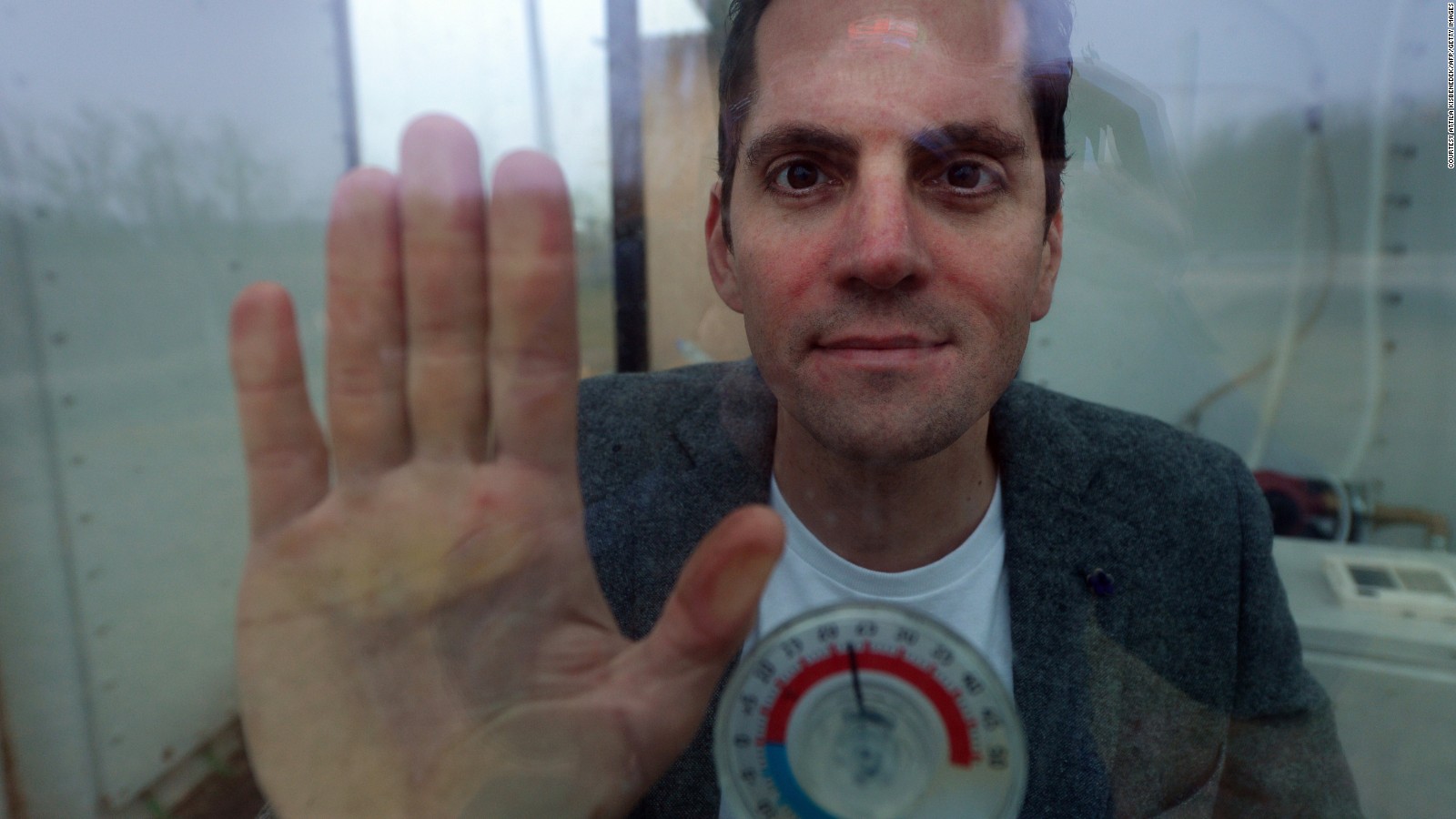Liquid engineering: Meet the man who builds houses with water
- Matyas Gutai is pioneering the use of water as an insulator for sustainable architecture
- Reacting to its surroundings, the water keeps the house at a comfortable temperature
Would you build a house with water?
Hungarian architect Matyas Gutai believes that water is the perfect material for keeping a house at a comfortable temperature.
And
while that doesn't mean that he can do away with traditional materials
like bricks, cement, and plaster, his system promotes a whole new idea
of engineering.
Gutai built a prototype
house in his hometown of Kecskemet, south of Budapest, with his high
school friend Milan Berenyi, after years of research and development.
The house was built with a grant from the EU, and showcases the "liquid engineering" concepts Gutai has written about extensively.
How does it work?
Panels,
some of steel, and some of glass, make up the structure of the house
and a sheet of water is trapped between the inner layers, which
equalizes the temperature across the building.
The
house is actually able to reheat itself, when its hot excess heat is
stored either in the foundations of the building or in external storage,
to be brought back to the walls when the temperature drops.
The indoor temperature can also be modified using a monitoring system similar to central heating.
This
is a very efficient and sustainable system: the house can produce its
own energy and be more independent of energy suppliers, which could
reduce carbon emissions.
"Our panel can heat and cool the building itself -- the water inside the panel does the very same job as heating," says Gutai.
"It
saves energy, when you compare it to a similar building with large
glass surfaces -- it's a very clean and sustainable solution."
The initial idea
While
studying sustainable architecture at the University of Tokyo, in 2003,
Gutai got the idea for his water house from a visit to the open air hot
baths.
Despite the snowfall outside the
pool, Gutai remained comfortably warm inside it -- it was then he
realized the importance of water's surface temperature and its potential
use in architecture.

A sheet of water moves around in between the inner layers of the house which equalizes the temperature across the building.
"As
an architect I think it's really important that this building tries to
redefine permanence, which has been a key concept in architecture for
thousands of years. Our approach to permanence hasn't changed much at
all, but now instead of making something very strong that tries to
resist everything, we are making something that adapts to its
environment.
"Architecture is really
changing in our time. We've reached our limits when it comes to solid
architecture, now it's reasonable to look for a new system."
Risks
"This
research dates back seven or eight years," explains Gutai. "I started
it at the University of Tokyo and it took us almost six years to get the
building done. There are plenty of structural problems involved -- a
lot of important questions were raised such as what happens if it's so
cold outside that the water freezes or what happens when one panel
breaks."
"We now mix the water with
natural solvents, that do not cause pollution but lower the freezing
temperature to an acceptable level. This practically means, that even if
the reheating technology fails, the water cannot freeze."
"In case of cold climates, like in Hungary, we also add some external insulation to the structure, to protect it from freezing."
And
if a panel were to break? "We designed special joint units. The joint
elements allow slow flow, but block faster flows," he explains.
This
means that if one panel breaks, it will be sealed from the remaining
ones instantly. This effect is based on fluid dynamics, and not
computers or monitoring system -- which minimizes the chance of failure.
Gutai has worked in cooperation with
universities and manufacturers to make sure the building is viable, and
while the prototype house is only a small space (eight square meters in
total) it demonstrates the power of this new technology.
Future plans
"Our
goal should be to use less energy and materials, and take cities
off-grid as much as possible. The water house is one way to do that,"
said Gutai, who currently works as a researcher at Feng Chia University in Taiwan.
Constructing
houses in this way is moderately more expensive than traditional
designs, but this prototype aims to slash our energy needs and Gutai is
working with factories and companies across Europe on projects using
this technology.
To make water the building material of a greener future.








![[New post] It’s over! Louis Walsh ‘axed from The X Factor after 11 years… as close friend Simon Cowell breaks the news himself’](https://blogger.googleusercontent.com/img/proxy/AVvXsEj-54WBae9OP9BmpdVRCXNvoJkWgFFix_EGzMvBmq_2WbC3iIfukifiUPtdZ86yv-PqjKpSK5UHg0pio6rZr5Tq2jPj6yFJ_GCx8gVfShSSt_D_7Tcuxn1gsHHgUKsIX4VQPz5DbO9lOE3yo2v-fOaj8LRZS5704hWY5gYuHniUAw8YOvKdNd9LdapmY4lfgOHnJXWqarrRTJ33SGc=s72-c-d-e1-ft)
![[New post] Heart-Punching Quotes That Will Make You Fall In Love With Poetry](https://blogger.googleusercontent.com/img/b/R29vZ2xl/AVvXsEgUaGgE3lWCpzEmbMkvuLtYgTsVQksSeYwkD3oyN85gk256sCMRAuPkgsOQZXyYH7YaUJGjzpBhO2a6TPPYhGmtGQPmNblXiMhAS6Xdxt9Y-4E8YDYO5spc-FUVRW_UG457kmQbooR3Xq8/s72-c/IMG-20150302-WA0000.jpg)

No comments: